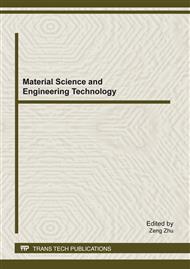p.123
p.129
p.135
p.141
p.147
p.154
p.160
p.164
p.169
Constant Scallop Height Algorithm of Self-Adaptive Tool Orientation with Toroidal Cutter
Abstract:
Using a 5-axis NC machining tool enables the tool to be oriented in any spatial direction to access a given point. This means interference can be avoided and the position of the tool can be optimized. This paper presents a new approach to generate gouging-free tool paths for constant scallop-height machining using 5-axis toroidal milling. We consider cutter positions, which guarantee local gouging avoidance. Based on second order approximations of the machined strip width, we present locally optimal cutting positions for cutting directions. The largest machined strip width of constant scallop height and the corresponding gouging-avoidance tool orientation are calculated. The effectiveness of the present approach is demonstrated through the comparing of tool path, velocity curve and acceleration curve of a typical sculptured surface, which generated by the present approach and the conventional constant scallop height. The results indicate that the present constant scallop-height machining achieves the specified machining accuracy with fewer and shorter tool paths than the existing tool path generation approaches. The dynamics is better, too.
Info:
Periodical:
Pages:
147-153
Citation:
Online since:
February 2012
Authors:
Price:
Сopyright:
© 2012 Trans Tech Publications Ltd. All Rights Reserved
Share:
Citation:


